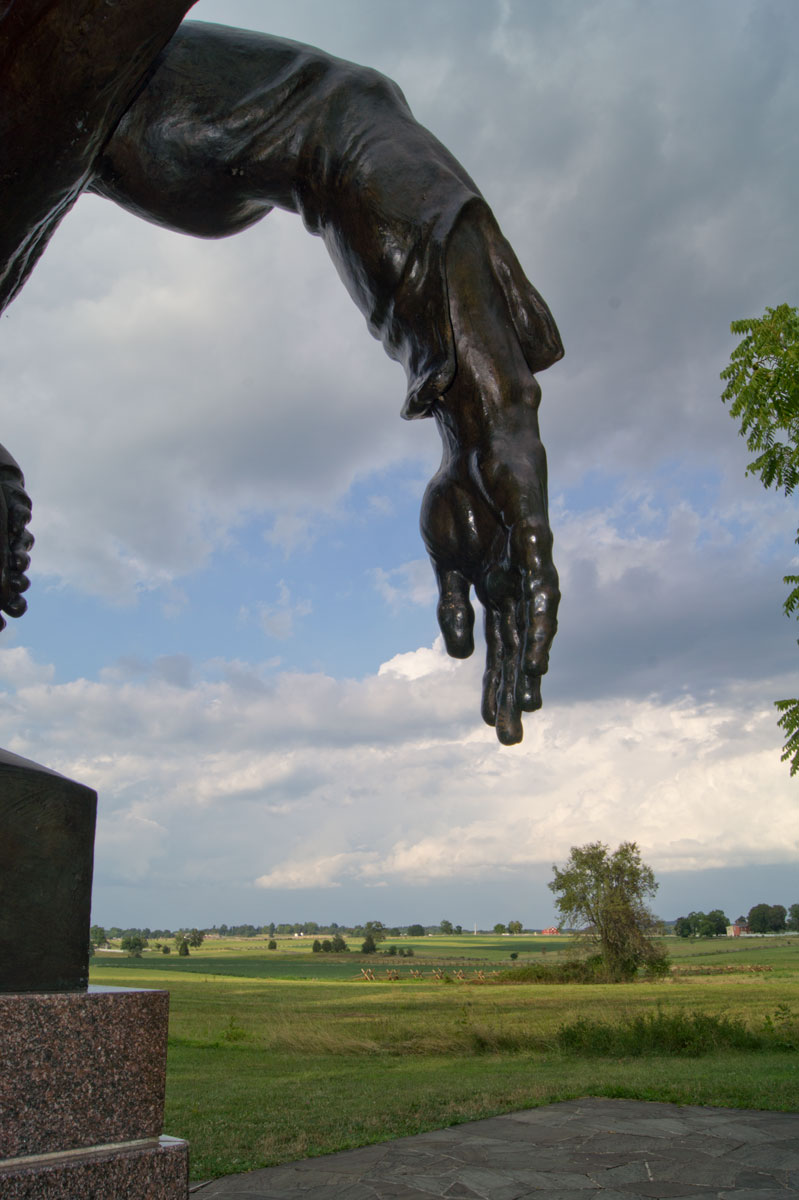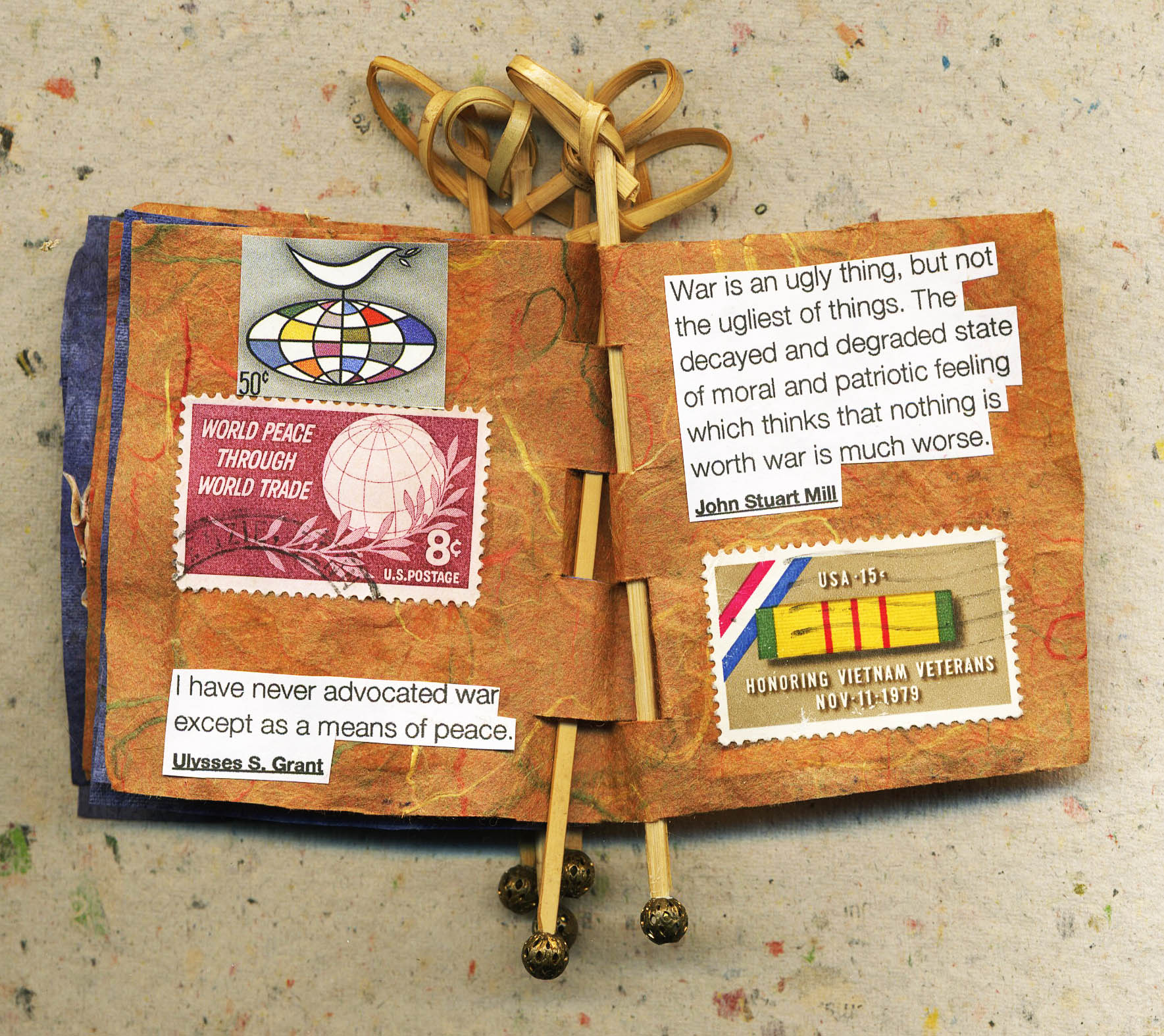Traveling across several states to my hometown of Ottawa/Gatineau, Canada, is a destination trip, not a vacation. A jaunt to Gettysburg, Pennsylvania, encompassed a desire to see the history of the area and a long overdue sojourn.
I’m entertained by the day-to-day events, I appreciate simple moments characterizing our lives. My artists’ books represent subjects in a unique, creative, and dynamic way for the reader to experience. Life is serious and I enjoy seeing readers re-acquaint themselves with mundane activities that link us together.
The history still lingers in Gettysburg, with fields and fields of monuments and leftover atmosphere of the days of the American Civil War, (as the southerners would call it, “The War of Northern Aggression”).
© 2017 Louise Levergneux, Gettysburg National Military Park, Gettysburg, PA
© 2017 Louise Levergneux, Gettysburg National Military Park, Gettysburg, PA
© 2017 Louise Levergneux, Gettysburg National Military Park, Gettysburg, PA
That being said, artists show many facets of life in their work, which include war.
Dorothy Krause presents the more serious side of life in her artists’ book WarZone: a traveling board game with no winner. WarZone is designed to be played anywhere other than in your own country. Instructions, game board, spinner board and game pieces are housed in a clear plastic suitcase.
© 2017 Dorothy Krause, The WarZone printed at Roland DGA on a LEF-300 in an edition of 10; the book measures 10 3/8” x 12 7/8” x 1 ½”
On the top of the suitcase, an image of the first atomic bomb blast is overlaid with a definition of war as “armed conflict, prosecuted with military forces aiming to enforce the political will of the victor upon the defeated”. It also contains information about human aggression from prehistory to the present and questions whether war is noble or morally problematic and destructive of lives and property.
The Spinner Board, printed onto stiff board and contour cut to fit into in the bottom of the suitcase, allows you to choose the country in which to play and gives information on ongoing conflicts around the world.
The countries shown on the map in black and around the outer edge of the circle have ongoing military conflicts that result in over 1,000 violent deaths per year, including both military and civilians. Other conflicts are shown in red on the map. You can turn the spinner to select a country in which to participate or choose from the list of additional war zones.
The Rules of Engagement state you can place your soldier on any square of the game board and move randomly any number of spaces in any direction. You need not take turns and can remove the soldiers of any other player at will unless you are removed first. If you are on a square with information and instructions, do as you are told.
The Game Board resembles a checkerboard which gives instructions such as “no weapons found: look again”, “tour of duty extended: start over” and “peace negotiations began: pray for success”. Red and black checker-like pieces are “us” and “them”.
The game never ends, but may move to a different place of engagement. There are no winners, only losers.
Maria G Pisano from Memory Press created Vita Defuncta in response to the poem Patterns by Amy Lowell. The poem was first published in 1916 in the collection Men, Women and Ghosts.
© 2005 Maria G Pisano, Vita Defuncta is housed in a publisher’s slipcase, with an open wound at its center, which becomes the symbolic black casket for the book within.
© 2005 Maria G Pisano, Vita Defuncta, letterpress printed with type Bauer Bodoni at LaNana Creek Press by Charles D Jones and Terri L Goggans at Stephen F Austin State University in Nacogdoches, TX
© 2005 Maria G Pisano, Vita Defuncta a limited edition of 25 is printed on Arches MBM Ingres, Fabriano Elle Erre, and Japan Yatsuo, the book measures 11” H x 13” W open
The poem contrasts loss in war with nature. Nature is a constant, as it follows the cycle of the seasons through planting, growth, decay, and renewal. Even in the dead of winter, there is promise of life.
War has also become a recurring cycle. Unlike nature, which brings change and growth through the seasons, war brings only death. As a result of the death of a loved one, the protagonist remains emotionally static and sterile, presenting a façade to the outer world, where she exists only as a fragile ornament.
In my response, language and symbolic representations are intertwined with the images, encompassing both the masculine and feminine aspects of the poem. The diamond and rectangle respond to each other and as the pages progress the symbols separate, culminating in the red masculine symbol transforming to a bloodstain at the end of the book. Once opened, one views a perfectly manicured pattern of a white flower-like form, holding the pages. The colors, the papers’ texture, tactility, the structure, are all used to reflect and are in service of the theme.
Elena Mary Siff’s sculptural works and text pieces derive from her background of assemblage art where she has an established reputation.
© 2017 Elena Mary Siff, War No More
© 2017 Elena Mary Siff, War No More
© 2017 Elena Mary Siff, War No More
I have been collecting stamps to use in my books for a very long time and when I realized I had enough vintage stamps to create an anti-war book I created War No More. In this political climate, it seems imperative to speak out against aggression and hostility and my tiny book is a response.
Elena constantly explores and expands the artistic paradigms of the book as object using visual space, volume, movement, and colour. Her source material for her unique books is often of a social and political nature and is influenced by her favourite poets and philosophers.
Lucy Childs talks about healing in her artists’ book How a Bandage Works. Lucy’s book shows the progress of healing over time.
© 2016 Marty Kelly Photography, Berkeley, CA martykelly.com, How a Bandage Works a textile (linen, cotton, silk, and rayon) accordion book
© 2016 Marty Kelly Photography, 4 by 31/2 by 1 inch, How a Bandage Works opens to 4" x 27"
You can imagine the bandage wrapped around a bleeding wound: a big red patch growing smaller and browner with each layer away from the cut. Imagery sewn over and around each blood patch symbolizes the healing taking place.
Merike van Zanten visited Normandy in June 2009 for the 65th anniversary of D-Day.
Merike’s artists’ book A Soldier of the Second World War tries to express the almost absurd contrast between the realities and horrors of the Invasion of Normandy in 1944 and the serenity, peace, and beauty of the Allied Cemeteries 65 years later. Dried flowers from Normandy, combined with photographs of Allied graves, correspondence to loved ones back home and portrait photographs taken before the soldiers went to war convey just that conflict.
© 2009 Merike van Zanten, A Soldier of the Second World War
© 2009 Merike van Zanten, A Soldier of the Second World War
© 2009 Merike van Zanten, A Soldier of the Second World War
While visiting the "recently" dug-out bunkers at Grandcamp Maisy, I was struck by the opposite of that current day and the same day in 1944.
2009 had beautiful weather, very quiet, wildflowers everywhere. In 1944, the weather wasn't so good, it must have been deafening with all the shooting and bombing going on, and certainly, the wildflowers would've been trampled by soldiers' boots. And if not, would the soldiers have noticed them?
I had similar thoughts when visiting an allied cemetery a couple of days later. Really quiet, flowers everywhere, immaculately groomed graves and headstones. You could think the soldiers finally had their peace and quiet, but at the same time, it seemed so unreal and contradictory.
After Reasonable Research, Years with No Acts of ‘Open and Declared Hostile Conflict’ Are Indicated with a Perpendicular Line. Perhaps They Were Periods of Peace by Miranda Maher is an astounding document of the absence of peace in our time. The book lists all open and declared armed hostile conflicts that have taken place between the year 1 and the year 2007.
© 2009 Miranda Maher, After Reasonable Research
© 2009 Miranda Maher, After Reasonable Research, the third edition comes in a plastic slipcase and includes a printed statement by the artist
Printed with a tiny font and arrayed in two seemingly endless columns, these conflicts fill mind-boggling twenty-two pages. The book is bound in an accordion structure with decorative paper, an uncomfortable reminder that the refinements of civilization are inseparably bound up with brutality.
What are your interpretations of war and armed conflict?
Have you represented these subjects in your artists’ books, writing, art...?

















